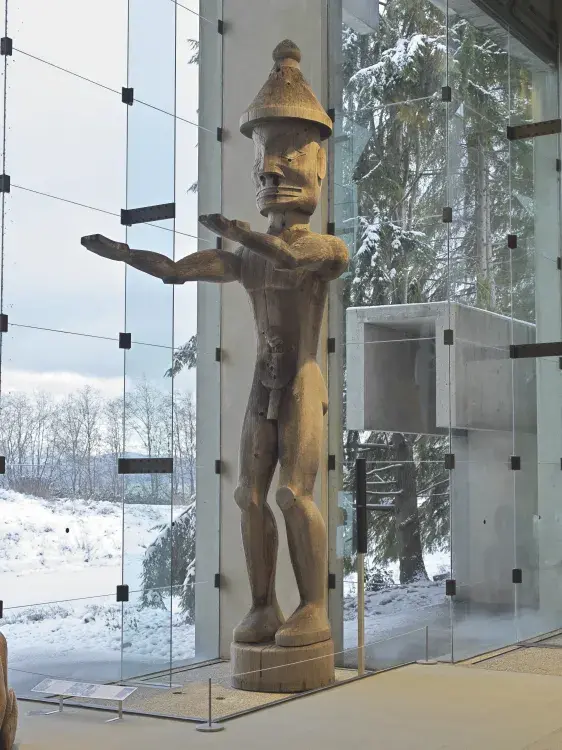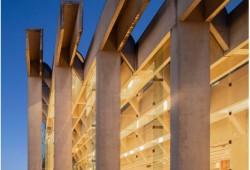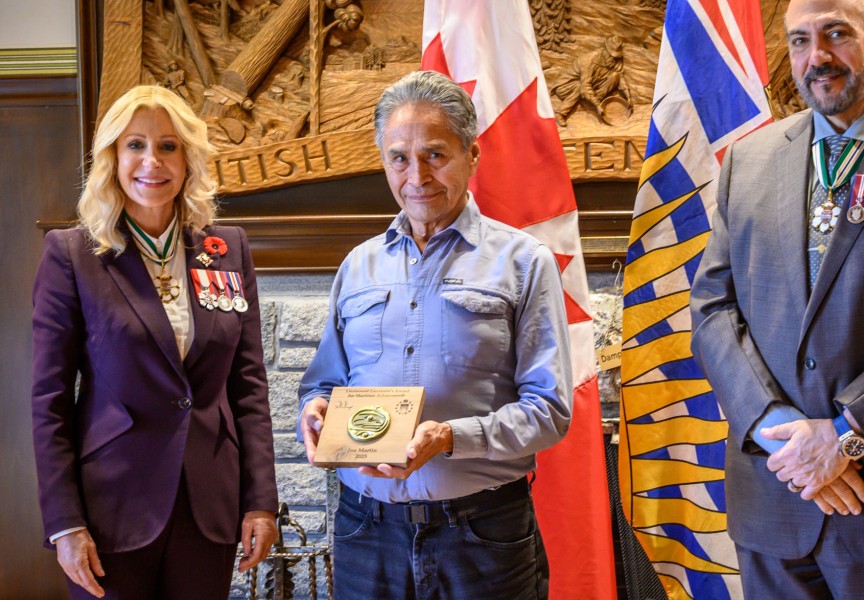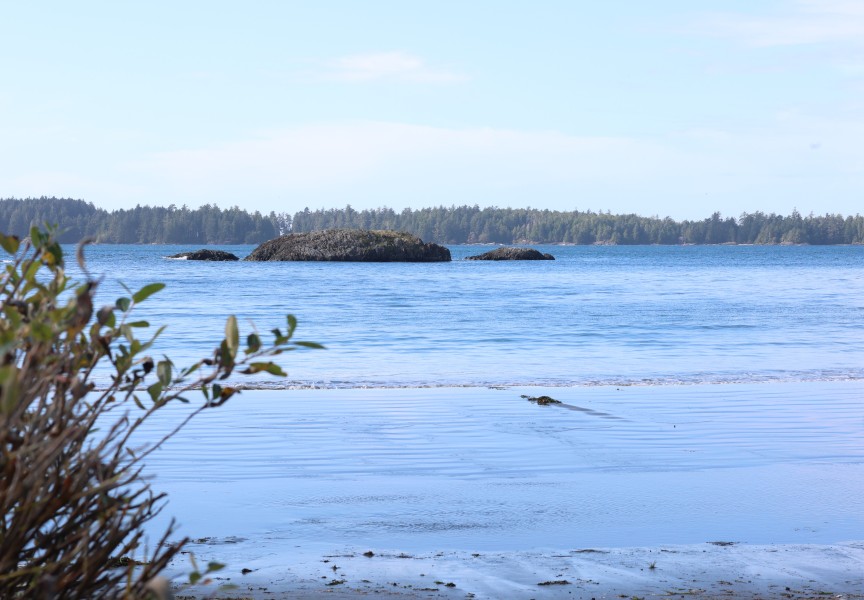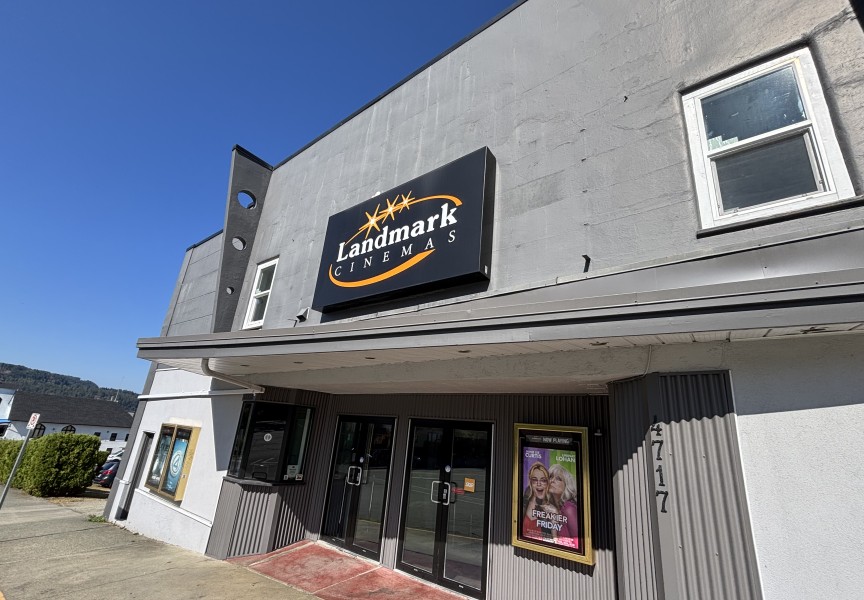After an 18-month closure for seismic upgrades, the Museum of Anthropology (MOA) at the University of British Columbia will reopen to the public next month.
Seismic upgrades were made to the museum’s Great Hall as well as the revitalization and reinterpretation of displays of Northwest Coast Indigenous carvings, poles, weavings and other works from the past and present.
The MOA is currently in possession of 830 Nuu-chah-nulth objects, 265 of which will be on display. Some notable Nuu-chah-nulth displays include a yašmaqac (Canoe) made in 1930. The vessel was typical of the sealing canoes made by the Nuu-chah-nulth people and represents the long history of trade relations between the Nuu-chah-nulth and Kwakwaka'wakw people.
There’s also two totem poles on display in the MOA’s Great Hall carved by Nuu-chah-nulth artists. The Cedar Man carved by Joe David of the Tla-o-qui-aht First Nation, made in 1984, stands at seven-metres tall and was created as a form of protest.
According to Joe David through information published by the MOA, this figure restates the message of a previous figure carved on Meares Island by his great-great-great grandfather. No longer standing, this earlier figure is said to have recorded the statement of an ancestor who lived at the time of the first European contact. This ancestor cautioned other chiefs and community members against the possible dangers of Europeans for Indigenous peoples.
The Whaler’s Pole is also on display and was carved in 1982 by Art Thompson from the Ditidaht First Nation. The pole stands at 12.65-metres tall and was commissioned by the museum.
According to the MOA, the log used for the carving was from the village of Oo-ees, on Nitinat Lake. It was donated by the Nitinat people for the project. In 1984 the pole was installed outdoors, on the side of UBC's Kenny Building (in recognition of Dr. Douglas T. Kenny). In 2018 it was moved to the MOA for drying and on April 19, 2024 it was raised inside the museum's great hall. The wooden harpoon tip had rotted, so it was replaced in 2024 with a new red wooden tip, carved and painted by Thompson's grandson, Ernie George, Jr.
The museum also has 62 small drawings in their collection by Hupacasath artist Ḥaa’yuups, Ron Hamilton, 21 of which will soon be on display. According to the MOA, the small works comprise a collection of drawings in pencil, ink, pencil crayon and felt pen made by the artist between the years 1968 and 2015. Many of the images represent killer whales, often in conjunction with accoutrements and symbols of Nuu-chah-nulth whaling.
The MOA will reopen to the public on June 13 at 5 p.m.
Along with the Museum’s reopening, MOA will present two exhibitions sharing Indigenous perspectives on colonial history: To be seen, to be heard: First Nations in Public Spaces, 1900–1965 (world premiere), and in Pursuit of Venus [infected] (Western Canada premiere) by famed Māori artist, Lisa Reihana. MOA’s reopening this summer coincides with the 75th anniversary of the museum’s opening to the public.
“We’ve waited so long to welcome back visitors from around the world to MOA this summer,” said Susan Rowley, MOA director, in a press release. “Over the past 18 months, MOA’s Great Hall has experienced monumental changes—some visible, some not, but all for a stronger future. It has been completely rebuilt from the ground up, incorporating innovative seismic technology into its foundations while restoring architect Arthur Erickson’s original 1976 design.”
Recognized as the first museum in Canada retrofitted with base isolation technology, MOA’s seismic upgrades are designed to protect the collections in the event of a major earthquake.
Additionally, upgrades to the lighting, skylights, roofing, window coverings, carpeting and fire protection will further protect the collection.
MOA’s Great Hall was first identified by UBC as a high priority for seismic upgrades in 2017, as part of the university’s ongoing seismic planning. It was determined that a complete rebuild was the best approach to upgrading the resiliency of the space without compromising its architectural heritage.
Budgeted at $40 million, the project was funded by the provincial government, Canadian Heritage and UBC. Construction began in 2021 and in January 2023 the museum was temporarily closed to accelerate the completion of the project.

